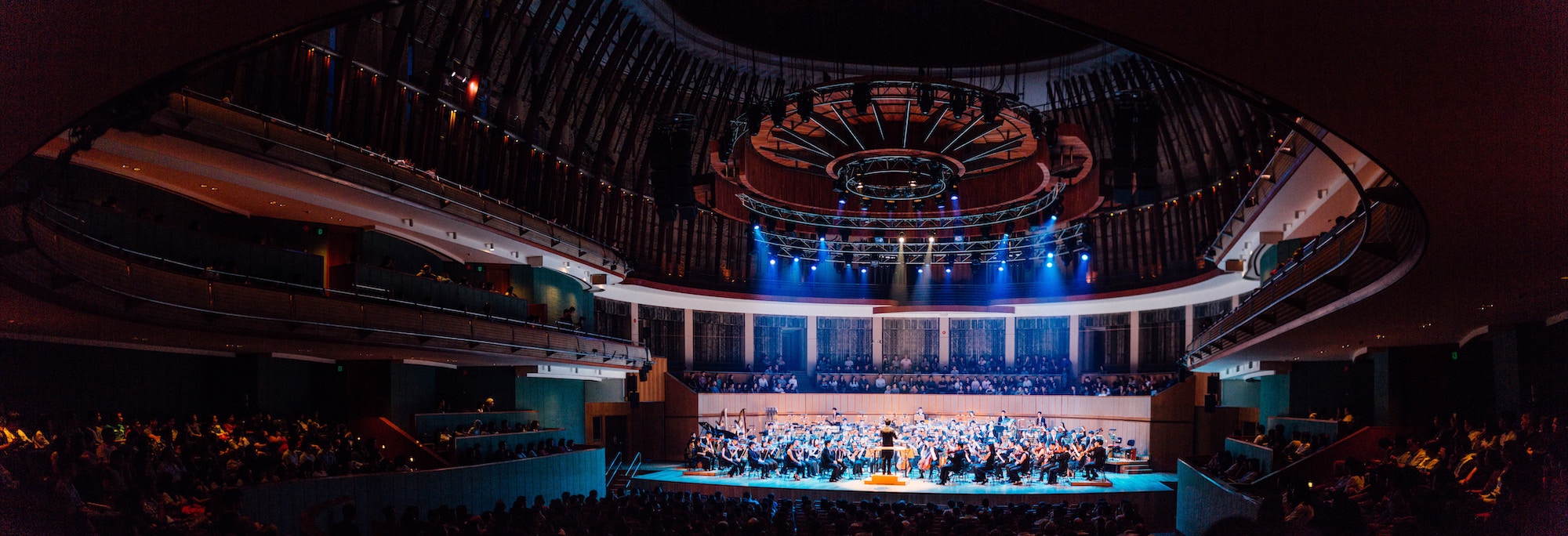
Getting Your Acoustics Pitch Perfect in a Performance Venue
Welcome to our technical blog series: Pitch Perspectives! This series of posts will explore the various elements and parameters required to ensure good interior room acoustics of various types of facilities from performance venues to prayer halls to multipurpose facilities. This introductory post outlines some of the general concepts while future blog posts will be more specific and application focused. All posts will have one goal: providing a positive acoustic experience.
Acoustics 101
Whether you’re going to see a play or a concert in a performance venue, listening to a lecture or attending a service in a place of worship, acoustics play a critical role in determining your enjoyment of the experience.
To understand acoustics, we need to understand our ears. The human ear receives sound waves which are short-term fluctuations of air pressure. Our brains extract vast amounts of information from these waves and help us comprehend detailed information about the world around us. Whether it is speech or music, where the sound is coming from or even how loud it is, the ear processes all of it.
To get better insight into the way we process sound, it’s beneficial to introduce the concept of flicker fusion threshold. Borrowing the example from vision, if we are presented with a series of images that change slowly, we interpret them as individual images. If we then shorten the time between changes, we start to see a progression of changing images. As the rate of change increases, we approach the flicker rate of our vision, and once there, our interpretation of the images starts to change from a succession of images to seeing motion much like we saw in Eadweard Muybridge’s The Horse in Motion clip in 1878. Our auditory systems are fairly complex and can interpolate a lot of information, and in this series we will explore how we perceive sound, and how that in turn informs how that sound arrives at the listener’s ears.
Performance venue acoustics need a multifaceted approach

For many years, reverberation time (RT) was the de-facto design parameter that was used for performance venue spaces. The reverberation time was also specified based on the programming needs of the space. However, in more modern years, we have come to understand that our experience in a space depends on much more than the reverberation time. Modern day acoustical design considers when the sound gets to a listener, the number of reflections, the envelopment of sound for a listener and a variety of other qualitative and quantitative parameters. We will explore the concepts of speech intelligibility (Distinctness – D50), clarity (C80), acoustic strength (G), lateral refraction, and diffusion in addition to reverberation time. Our Pitch Perspectives series will present how these parameters are applied for different spaces.
As we get deeper into the technical aspects, it is important to keep in mind some of the higher-level considerations as they will have an impact on the design. Every performance venue project needs to ask a few critical questions:
1. What is the purpose of the performance venue?
Is this for musical or theatrical acoustics or is the space going to be used for multiple purposes which will require greater acoustic flexibility? We often get requests for a space that can accommodate musical and theatrical needs. If this is the case, we need to determine the priority because optimizing the space for one of these purposes may be detrimental to the other. Of course, there are creative solutions that can enable a space to accommodate various types of acoustics such as with Koerner Hall at the Royal Conservatory of Music in Toronto. Automated retractable curtains are deployed to provide more acoustic absorption in the space for speech or amplified music and with the press of a button the curtains disappear for non-amplified musical performances. The Aga Khan Museum is a similar project where we needed great acoustic flexibility to accommodate music, lectures, film festivals and school groups.
2. For musical performances, what kind of music will be played?
Whether it be Opera, Symphonic, Baroque, Eastern, Gregorian chants or Amplified Music like rock or some forms of jazz, we need to determine the ideal acoustical environment for the design. The answer will impact the acoustical design because we need to determine the right balance of acoustic reflection arrival times, strength, and direction. If we want to optimize for speech, the greater the early energy, the better the intelligibility. With certain types of music, however, if there is too much early acoustic energy, the space can feel dry and the acoustics would not have sufficient resonance. Spaces in this category tend to make the natural acoustics feel muted, or artificially quieter.
3. How quiet does it need to be?
If you want absolute silence for a powerful monologue, then your acoustical budget will need to reflect this, particularly if you’re located close to the hustle and bustle of downtown or near the subway. If you’re in the preliminary design stages, you can consider a different, quieter location but if that’s not an option, we need to factor in additional vibration isolation to minimize noise transfer from outside sources. In addition to possible external sources of noise, it’s critical to also consider the internal sources such as the various building systems. The mechanical system, in particular, would need to be designed to achieve the desired level of noise and this can often have significant cost implications.
4. Is there an audience?
Is this venue being used for broadcasting or recording? We are not as concerned here about how the ear works but rather how microphones work. We need to ensure that we minimize sound transfer between the walls, doors, floors and ceiling to ensure outside noise doesn’t interfere and contaminate a recording.
Perfecting performance venue acoustics
It doesn’t matter if it is an intimate 50-seat venue or a 50,000-seat stadium, bad acoustics can’t usually be fixed with makeshift solutions or solely with speakers and sound systems. This needs to be addressed during the design stages to ensure an optimal experience for your audience.
Over the coming months, we will take a closer look at acoustical design and how it varies by musical genre and by purpose. We will also show how we have used these traditional performing arts centre design parameters for other spaces to create excellent acoustic environments. If you have any questions or need expert advice on how to acoustically design your space, please contact us at [email protected].
